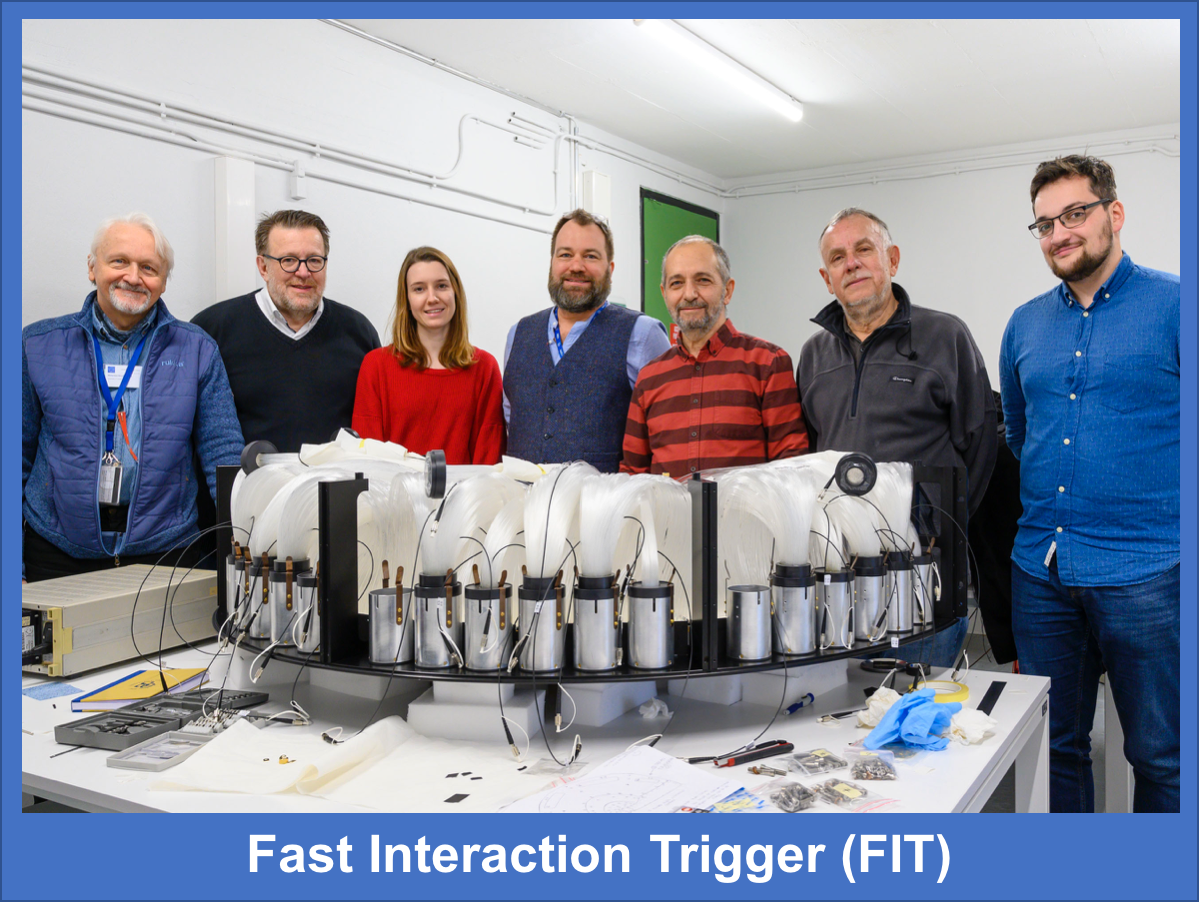Fast Interaction Trigger

The Fast Interaction Trigger (FIT) is the fastest trigger, online luminometer, initial indicator of the vertex position, and the forward multiplicity counter for ALICE. In the offline mode, it provides the precise collision time for the TOF-based particle identification, yields the centrality and interaction plane, and measures cross-sections of diffractive processes. As a result of the LHC injectors upgrade after the second Long Shutdown (LS2), the expected Pb-Pb luminosity and collision rate during Runs 3 and 4 will considerably exceed the design parameters for several of the key ALICE detector systems including the forward trigger detectors. FIT will be the primary forward trigger, luminosity, and collision time measurement detector. It will also determine multiplicity, centrality, and reaction plane of heavy ion collisions. FIT is expected to match and even exceed the functionality and performance secured during LHC Run1 and Run2 by three ALICE sub-detectors: the time zero detector (T0), the VZERO system (V0), and the Forward Multiplicity Detector (FMD). FIT consists of two arrays of Cherenkov radiators with Multichannel Plate - Photomultiplier Tube (MCP-PMT) sensors and of a single, large-size scintillator ring. Because of the presence of the muon spectrometer, the placement of the FIT arrays is asymmetric: ~800 mm from the interaction point (IP) on the absorber side and ~3200 mm from IP on the opposite side.
The active elements of FIT use three different detector technologies grouped mechanically into four arrays:
-
The two FIT FT0 arrays consist of modules of quartz Cherenkov radiators coupled to microchannel plate based (MCP) photomultipliers. The intrinsic time resolution of each quadrant is ~13 ps. Accounting for signal deterioration along the 30 m long signal cables and processing by the front- end electronics, the achieved one-MIP time resolution of FT0 is about 25 ps.
-
The FIT forward diffractive detector (FDD) is made of two arrays, FDD-A and FDD-C. Each array has eight pads arranged in two layers of four pads each for a total of 16 readout channels. Each pad has two fast wavelength shifting bars of 1 ns re-emission time attached to the sides and optical fibres bundles to transport the light from the WLS bars to a fine-mesh PMT. The FDD will contribute to the trigger, luminosity determination, and beam monitoring. In addition, due to its forward coverage and sensitivity, it tags diffractive events in proton-proton collisions and photon-induced processes in p-Pb and Pb-Pb interactions.
-
FIT FV0 is a large segmented scintillator disk with a novel light collection scheme assuring short pulses, single MIP time resolution of ~150 ps, and a very uniform response across the entire detection surface. The segmentation into 48 channels, combined with the information from the other forward detectors, is sufficient to yield the required centrality and event plane resolution The FV0 also monitors LHC background conditions and luminosity.
